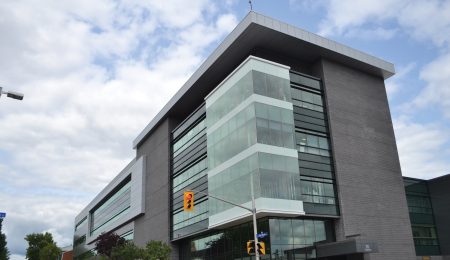The Fulcrum got a tour of U of O’s Advanced Research Complex, here are a few things we learned
A building typically only available to the eyes of researchers and graduate students in the photonics and earth sciences field, the Fulcrum was invited to tour the Advanced Research Complex (ARC) by professor Ian Clark.
The building is home to Canada’s only accelerator mass spectrometer (AMS), which allows researchers to analyze radioisotopes, which are radioactive isotopes of an element, a good example being uranium. This massive machine takes up a good portion of the lab and can be seen from outside.
Dr. Clark, whose research focuses on groundwater geochemistry and environmental isotopes in hydrogeological settings, is one of the few individuals who is able to operate the machine.
A decade ago, Clark and a colleague were able to receive equipment grants from the Canada Foundation of Innovation and generate enough support to build the Advanced Research Complex on the U of O campus in 2012.
The AMS on site can measure trace radioisotopes in the environment with the most common being radiocarbon. This can be used as a dating tool, allowing for this to be a national facility that is accessed by all sorts of research facilities for radionuclide analysis.
Walking into the massive room with the AMS, the floor for this machine is separate to the main building, with a foundation of bedrock, in order to ensure that there is no noise or ground movement that could affect the results of any experiments.
The amount of power used is also important to note. A small power surge can affect results, and it is common to have events such as buildings being built nearby, or a small surge in power have a significant impact on the results.
The lab takes in bones, ancient relics, tree samples and other historical data, and can use small trace samples to get an accurate date of that piece. The lab can use samples from bones, bone meal used on spears and other materials to get an accurate measurement of what time period that object came from.
With the scanning electron microscope, we were able to view high resolutions scans of extremely small objects. On their website, it is also possible to view scans or pollen on a flower, and even a beer stein to check for lead.
The more expensive piece of machinery is the JEOL 8230 SuperProbe which can perform microanalysis as small as one square micron.
Even with COVID-19 the lab has not stopped functioning, and will continue to perform ground breaking research in the natural science and photonics fields.





